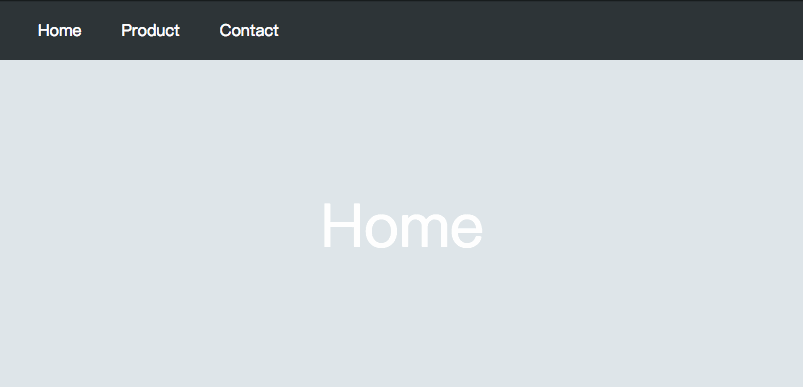Home >Web Front-end >JS Tutorial >Detailed explanation of BubbleTransition practical case
Detailed explanation of BubbleTransition practical case
- php中世界最好的语言Original
- 2018-06-09 15:43:162661browse
This time I will bring you a detailed explanation of the practical case of BubbleTransition. What are the precautions for using BubbleTransition? The following is a practical case, let’s take a look.

CodePen Address
After using SPA on the front end, you can gain more control, such as page switching animations. We may not be able to do the above using back-end pages. The effect will be obvious, or there will be an obvious splash screen. Because all resources need to be reloaded.
Today we use vue, vue-router, and animationjs to explain how to achieve the above effect.
Steps
Click on the menu to generate Bubble and start the entry animation
Page jump
Execute exit animation
##Functional calling component
I hope the effect is to be called through an object, rather than instructions such as v-show, v-if, and in order to maintain uniformity, Still use Vue to write components. I usually implement this with a new Vue root node to keep the effect independent of the business components.let instance = null
function createServices (Comp) {
// ...
return new Vue({
// ...
}).$children[0]
}
function getInstance () {
instance = instance || createServices(BubbleTransitionComponent)
return instance
}
const BubbleTransition = {
scaleIn: () => {
return getInstance().animate('scaleIn')
},
fadeOut: () => {
return getInstance().animate('fadeOut')
}
}Then implement BubbleTransitionComponent, then BubbleTransition.scaleIn, BubbleTransition.scaleOut will work normally. Animation execution end events that animejs can listen to. anime().finished gets the Promise object.
<template>
<p class="transition-bubble">
<span v-show="animating" class="bubble" id="bubble">
</span>
</p>
</template>
<script>
import anime from 'animejs'
export default {
name: 'transition-bubble',
data () {
return {
animating: false,
animeObjs: []
}
},
methods: {
scaleIn (selector = '#bubble', {duration = 800, easing = 'linear'} = {}) {
// this.animeObjs.push(anime().finished)
},
fadeOut (selector = '#bubble', {duration = 300, easing = 'linear'} = {}) {
// ...
},
resetAnimeObjs () {
this.animeObjs.reset()
this.animeObjs = []
},
animate (action, thenReset) {
return this[action]().then(() => {
this.resetAnimeObjs()
})
}
}
}The original idea is to add a mark to a specific route meta in the router config, and then judge the mark to perform animation during beforeEach. However, this method is not flexible enough. Instead, it is marked by Hash, combined with Vue-router, and the hash is reset when switching.
<router-link class="router-link" to="/#__bubble__transition__">Home</router-link>
const BUBBLE_TRANSITION_IDENTIFIER = '__bubble__transition__'
router.beforeEach((to, from, next) => {
if (to.hash.indexOf(BUBBLE_TRANSITION_IDENTIFIER) > 0) {
const redirectTo = Object.assign({}, to)
redirectTo.hash = ''
BubbleTransition.scaleIn()
.then(() => next(redirectTo))
} else {
next()
}
})
router.afterEach((to, from) => {
BubbleTransition.fadeOut()
})Cool animations can catch users’ attention in an instant. I often say, wocao, so cool when browsing some websites! ! ! sigh. Maybe the final implementation won't require more than a few lines of code. I'll try to implement it myself. Next time the designer puts forward unreasonable animation requirements, I can show off. I can make this effect in minutes, but I don't think it should be used here** The animation does not meet the user’s psychological expectations. I believe you have mastered the method after reading the case in this article. For more exciting information, please pay attention to other related articles on the php Chinese website! Recommended reading:
Detailed explanation of the coexistence of onClick event and onDblClick event
How to use Vue animate transition animation in the project
The above is the detailed content of Detailed explanation of BubbleTransition practical case. For more information, please follow other related articles on the PHP Chinese website!
Related articles
See more- An in-depth analysis of the Bootstrap list group component
- Detailed explanation of JavaScript function currying
- Complete example of JS password generation and strength detection (with demo source code download)
- Angularjs integrates WeChat UI (weui)
- How to quickly switch between Traditional Chinese and Simplified Chinese with JavaScript and the trick for websites to support switching between Simplified and Traditional Chinese_javascript skills

